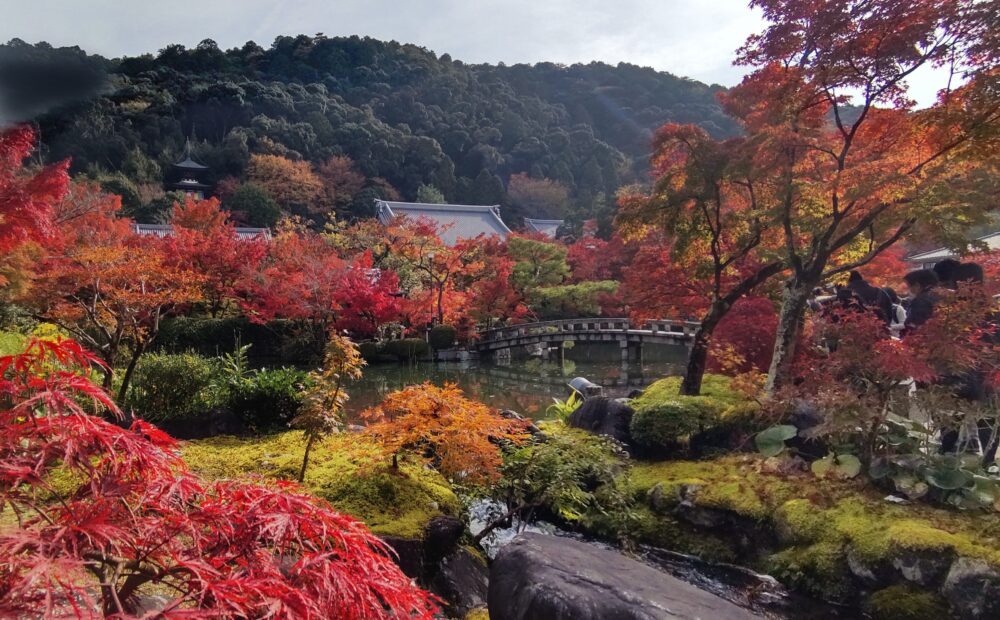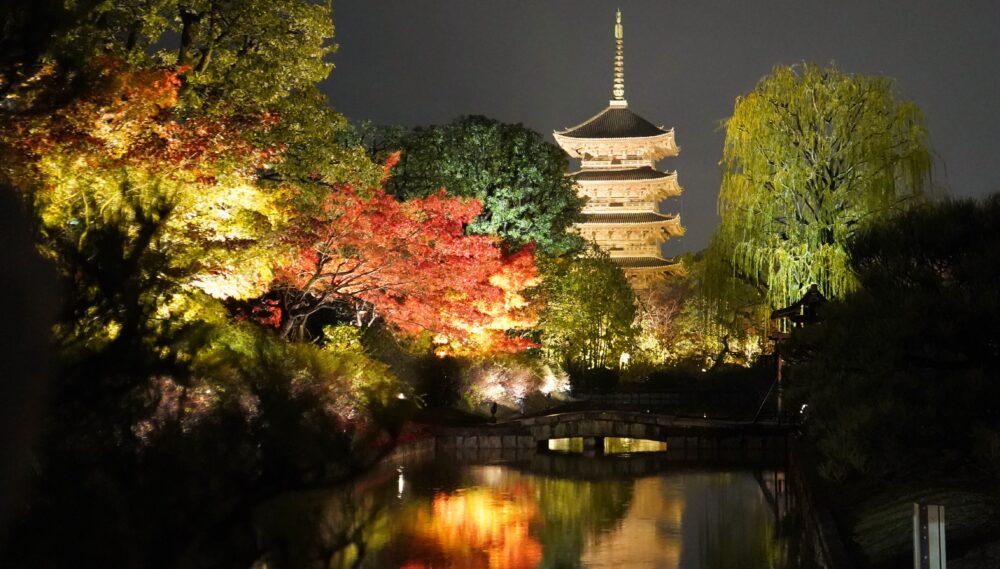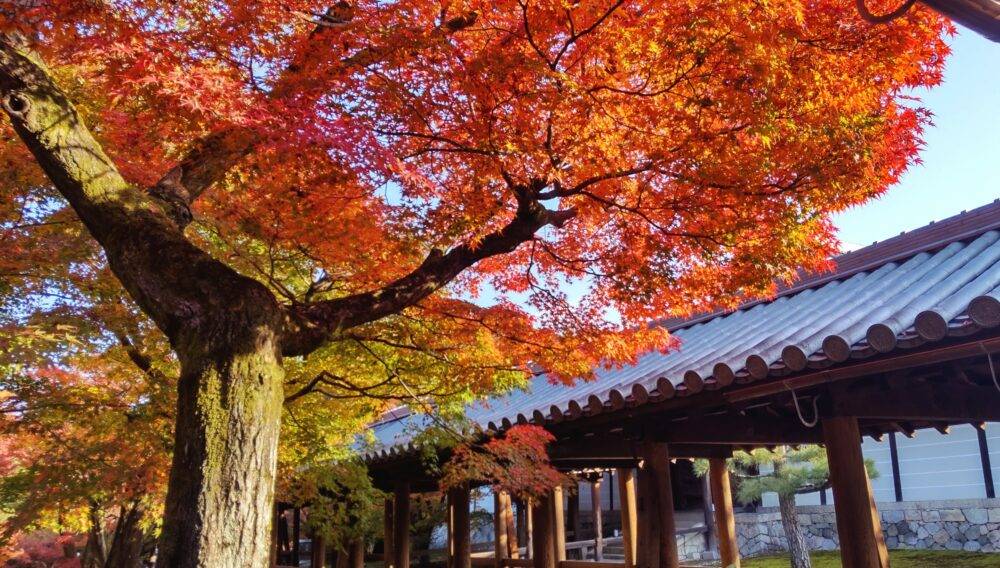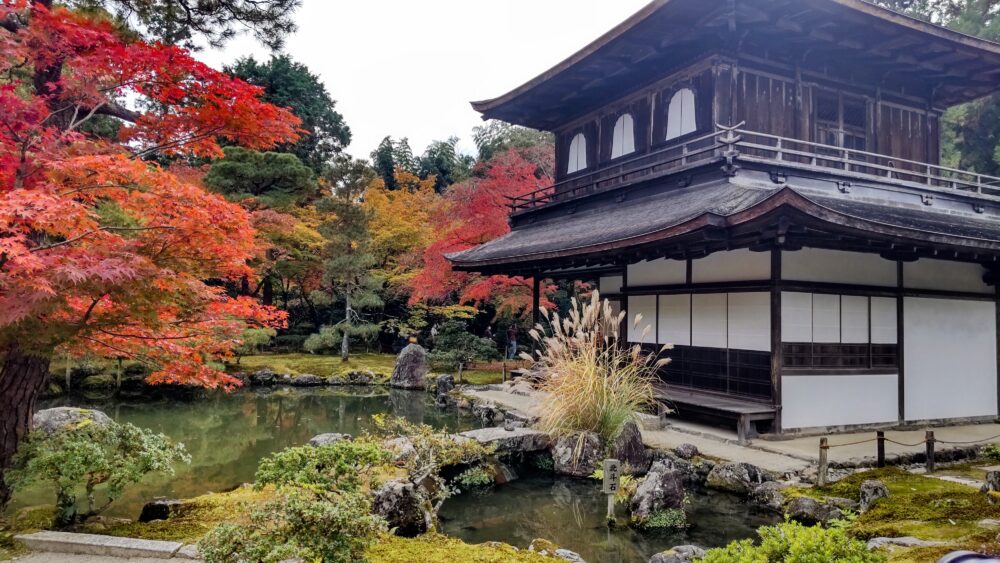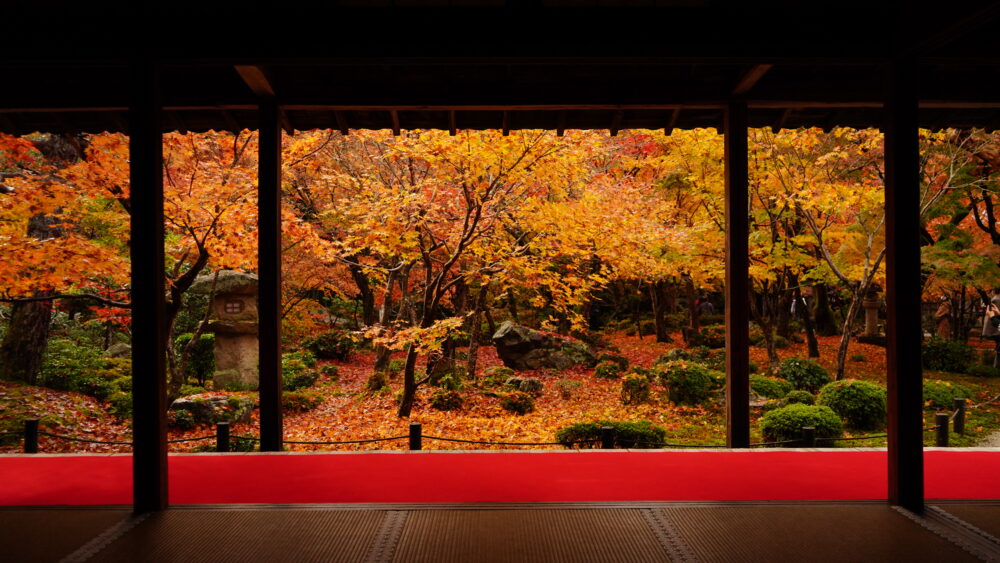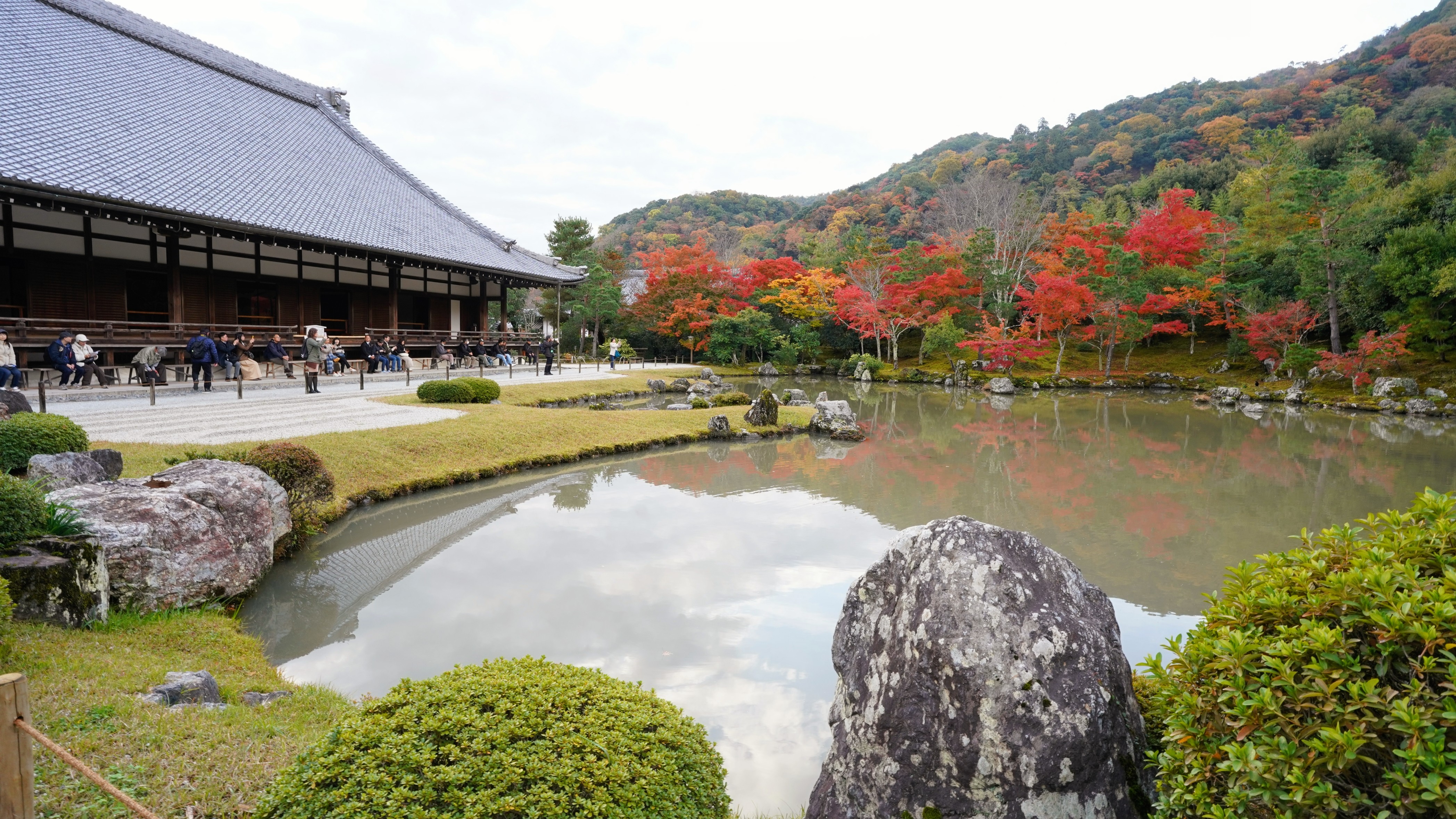Kinkaku-ji Temple(Golden Pavilion): The Best Time to Visit in 2025
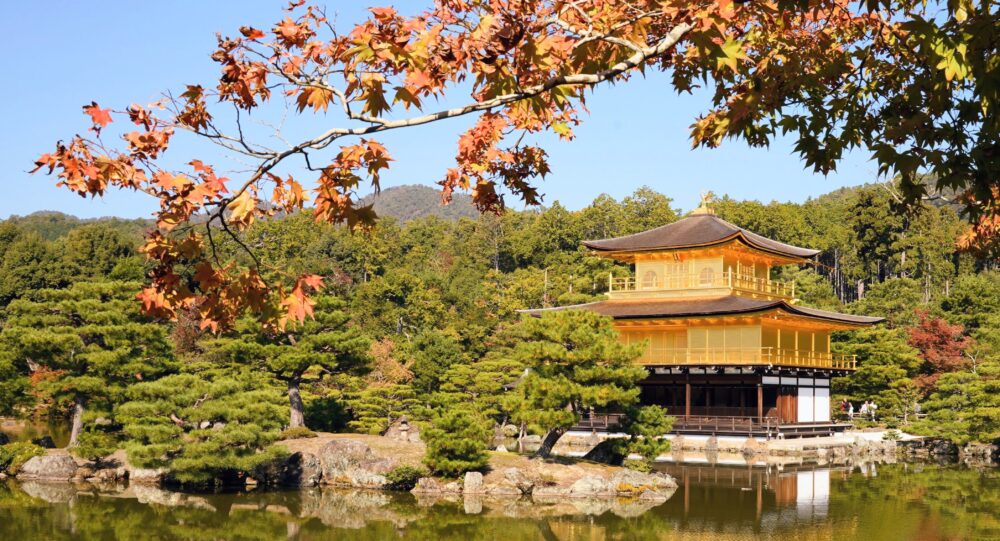
Kinkaku-ji is a Zen temple located in the north of Kyoto city, famous as the Golden Pavilion, whose structure is the three-story building covered with gold leaf and a golden phoenix on top. Usually it’s compared with Silver Pavilion (Ginkakuji), which is also a Zen temple in the east of Kyoto city.
Kinkaku-ji Temple, covered with 20 kilograms of gold leaf, is a dazzling pagoda that attracts many tourists. It became the second most popular tourist spot in Kyoto, making it well worth a visit. To have a wonderful experience, here’s infromation about the best time to visit.
The best seasons
Winter season
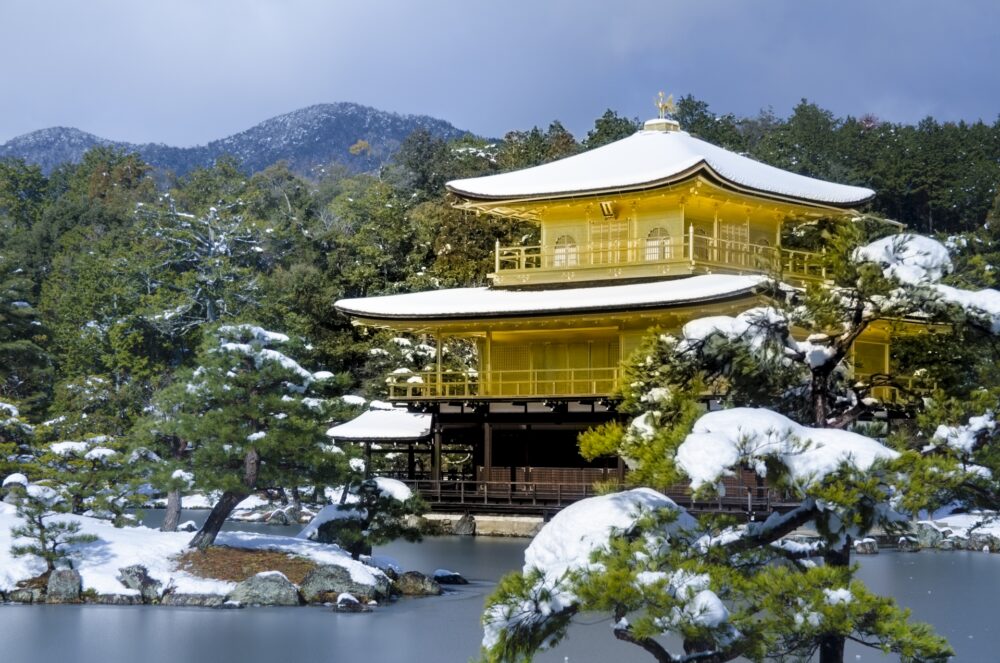
The best season is winter, when the golden pavilion is covered with snow. A bright contrast of snow white and gold makes the scenes more impressive. The overlooking pond and gardens are also great to make the golden pavilion stand out.
From the entrance, the garden is filled with evergreen trees that retain their green color even in winter. These trees are planted to obstruct the view of Kinkaku-ji from the entrance, in accordance with traditional garden design, and to create a roji (garden design for the teahouse), a path leading to the sekkatei (teahouse). In particular, black pine, known as one of the most prestigious trees in Japanese gardens, is often planted to create a representation of Mount Horai (inspired by Chinese myth). These trees keep their fresh green leaves throughout the winter.
The daytime temperatures and sunlight melt the snow in a few days, whose beautiful sight was from early to last February 2024. In early to mid-February 2025, a cold wave is predicted to hit the Japanese archipelago, bringing possible snowfall to Kyoto. During this time, you may witness the breathtaking sight of a pristine white Kinkaku-ji (Golden Pavilion) amidst the snow.
Weather Forecast in Kyoto
It is undoubtedly a beautiful winter sight to behold, but be aware of the crowds, even in the off-season. Visitors must wait about 10 minutes to get to the front of the crowd to take pictures.
Fall season
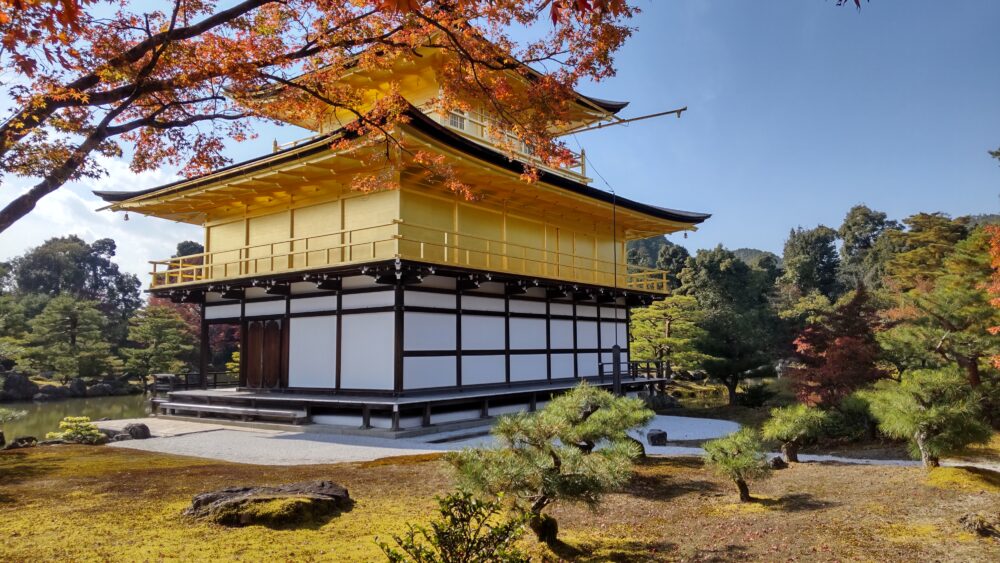
A visit to Kinkaku-ji during the fall season is especially rewarding, as the maple leaves turn bright red and the ground-covering moss turns a rich emerald green. Around the Golden Pavilion, there are several species of maple trees (Acer palmatum, Acer amoenum, and Acer palmatum var. matsumurae) that change color.In recent years, mild winters have delayed the start of the fall foliage season. In 2024, the leaves turned red from late November to early December, with the peak color occurring first week of December. With a mild winter forecast for 2025, fall foliage is expected to occur around the same time next year. If you visit during this time, you can see breathtakingly beautiful scenery.
Gardeners prune the garden trees during this time to ensure that the gardens are at their most beautiful when visitor numbers are at their highest. In particular, the garden contains historic natural monuments such as the “Rikushu no Matsu,” a Japanese white pine tree shaped like a ship, and the imposing yew tree at the entrance gate, both of which are carefully pruned.
Best time to visit Kinkaku-ji
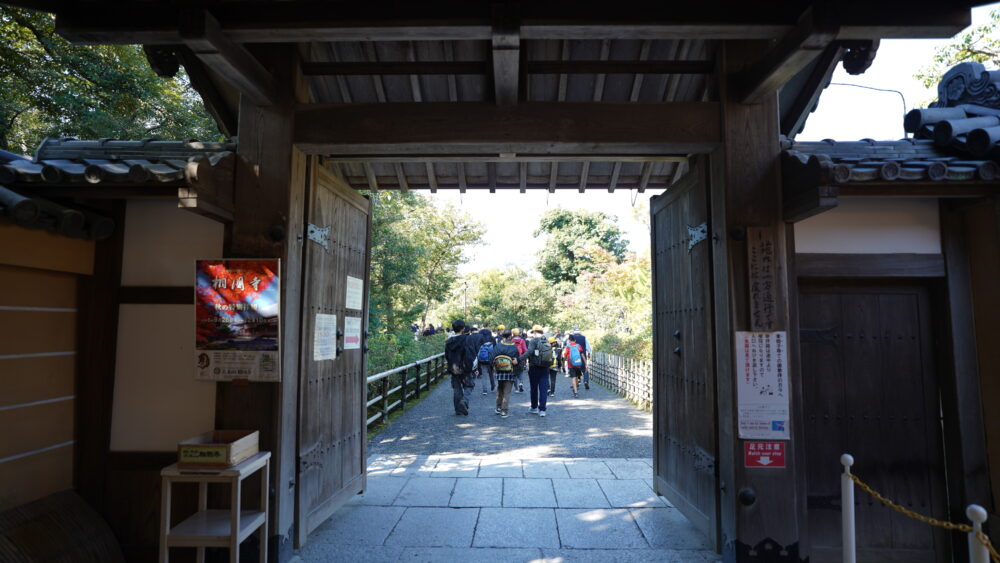
At any time of the year, Kinkaku-ji is crowded with tourists seeking to take magical photographs. However, with a little planning, you can visit easily. Here are some tips for getting there and avoiding the crowds
Date & Time
- Visit on a weekday:
Since many domestic tourists visit on weekends, weekdays offer a more peaceful experience. - Arrive from 9:00 to 10:00 a.m.:
Kinkaku-ji Temple opens at 9:00 a.m. If you arrive early between 9:00 and 10:00 a.m., you can enjoy a more peaceful atmosphere with fewer visitors. The Golden Pavilion looks especially beautiful in the morning sunlight. - Visit around 4:00 p.m.:
It is also advisable to visit Kinkaku-ji Temple around 4 pm. With fewer crowds, you can take your time exploring the temple grounds. The temple closes at 5:00 p.m. for a peaceful visit. From fall to winter, the sun begins to set around 4:30 pm. You can enjoy a stunning view of Kinkaku-ji Temple and the setting sun from the elevated Sekkatei Tea House. - Check the congestion website for Kyoto:
Kyoto City offers a real-time congestion forecast service that allows visitors to check the expected level of congestion around Kinkaku-ji Temple.
Congestion Forecast Service Website
How to get to Kinkaku-ji temple
During the peak seasons of spring (March-April) and fall (November-December), Kyoto is crowded with tourists, causing traffic jams. You may have to wait in line for more than 30 minutes to board a bus, then spend another 30 minutes in traffic, making your trip an hour or more behind schedule. To avoid these delays, it is recommended that you take a train and walk to Kinkaku-ji Temple.
- From Kyoto Station, take the JR Sanin Line(Purple Line) to Uzumasa Station, then transfer to the Keifuku Electric Railroad Kitano Line(Indigo Blue Line) and get off at Kitano Hakubai-cho Station. Even on snowy days, trains run safely in Kyoto city.
- It’s a 20-minute walk from the nearest station, Kitano Hakubai-cho, to Kinkakuji Temple.
- If you don’t mind a longer walk, you can take the Karasuma Line(Green Line) subway from Kyoto Station to Kitano-oji Station. From there, it’s about a 40-minute walk west to Kinkaku-ji Temple. Along the way, you can visit Daitoku-ji Temple, famous for its karesansui (Japanese dry garden), and Imamiya Shrine, known for its beautiful fall foliage.
Using buses, taxis and cars is also convenient when it’s not high season; except March, April, November, December.
- The closest bus stop is Kinkakuji-mae, but the bus line is often crowded, especially during rush hour.
A recommended alternative is to take a bus to Ritsumeikan University, which is about a 13-minute walk from Kinkakuji. Since this bus is mainly used by university students, it’s relatively less crowded except during peak hours (8:00-9:00 a.m. and 4:00-5:00 p.m.). You can take the #50 bus from Kyoto Station to Ritsumeikan University.
- If you are visiting Kinkaku-ji by car or motorcycle, there are four parking lots nearby. The fourth lot is the least crowded and is recommended. While the other lots around Kinkaku-ji close at 5:10 p.m., the fourth lot is open 24 hours a day, making it convenient for exploring other places in the area. Although the fourth parking lot is the farthest from Kinkaku-ji, it is still within a 5-minute walk.
- Cycling is also good, as the roads to Kinkaku-ji are well maintained, there are many bicycle rental shops, and there is a bicycle parking lot in front of Kinkakuji Temple.
- Another popular option is to stay at a hotel or inn near Kinkakuji, in the northern part of Kyoto City (Kita district). There are many hot spots: Ryoanji Temple, Daitokuji Temple, and Kitano Tenmangu Shrine. A one-day walking tour of these tourist attractions is also popular.
History
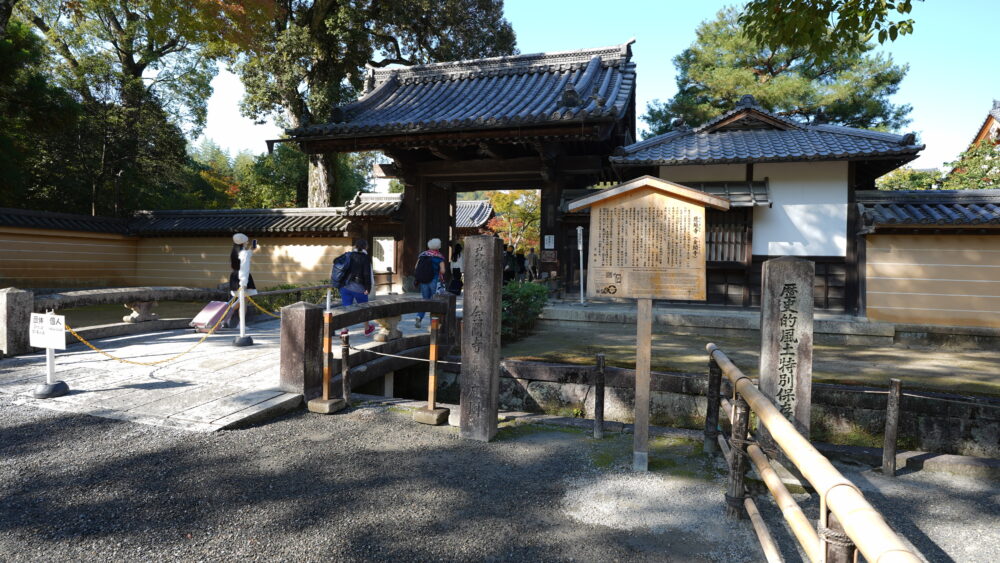
Originally, Kinkaku-ji(Golden Pavilion) began in 1397 when the third shogun of the Muromachi period, Yoshimitsu Ashikaga, purchased a villa from the Kamakura period courtier, Kintune Saionji, and built the mountain villa known as Kitayama-dono. From this villa, the “Kitayama culture” emerged, a new culture that blended aristocratic and samurai cultures. While influenced by the Zen emphasis on simplicity, it is characterized by elegance and splendor due to the strong influence of courtly culture.
The official name of Kinkaku-ji is “Rokuonji Temple(鹿苑寺)”, which was founded by Zen master Kokushi Musou and takes letters from two characters in Yoshimitsu’s dharma name “Rokuonin-dono(鹿苑院殿)”. In 1950, the building was completely burned down due to arson by a university student who was an apprentice monk at the time. Using architectural plans from a previously planned dismantling and repair, the temple was rebuilt in 1955 to a state close to its original construction. The symbolic Golden Pavilion, completely covered in gold leaf, was restored.
Must-see spots in Kinkaku-ji
Golden Pavilion
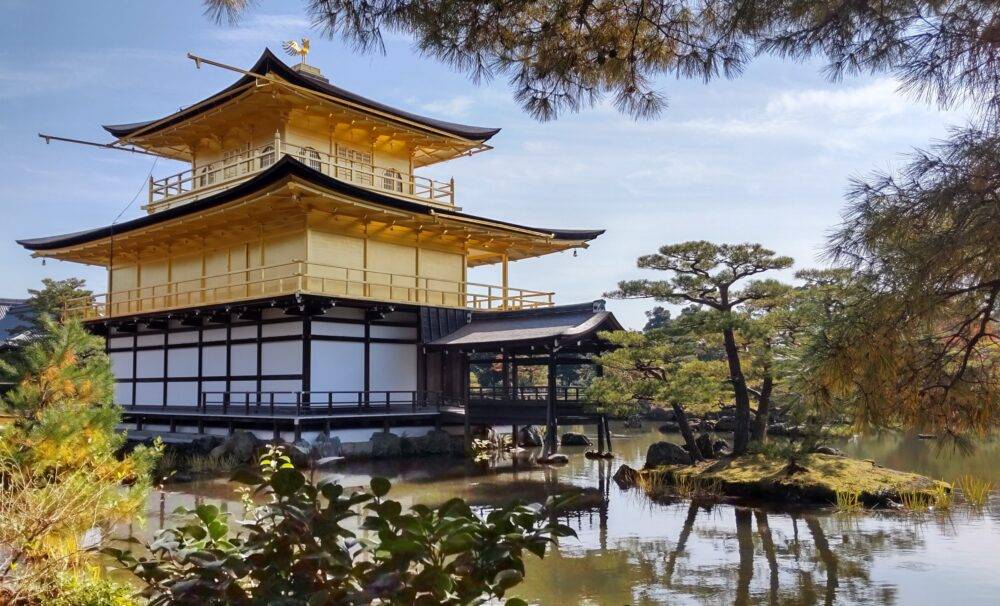
The Golden Pavilion is the iconic building of the Kinkaku-ji temple. Its official name is Shariden, the hall where the Buddha’s ashes are enshrined. This three-story structure is completely covered in gold leaf on the second and third floors, hence its popular name, the Golden Pavilion. A golden phoenix statue adorns the top of the building, symbolizing eternal life and power.
Kyoko-chi Pond is located in front of the Golden Pavilion and covers approximately 6,600 square meters. Moreover, there are ten islands and more than fifteen rocky islets within the pond. Collectively, these islands represent the Japanese archipelago.
Kyokochi
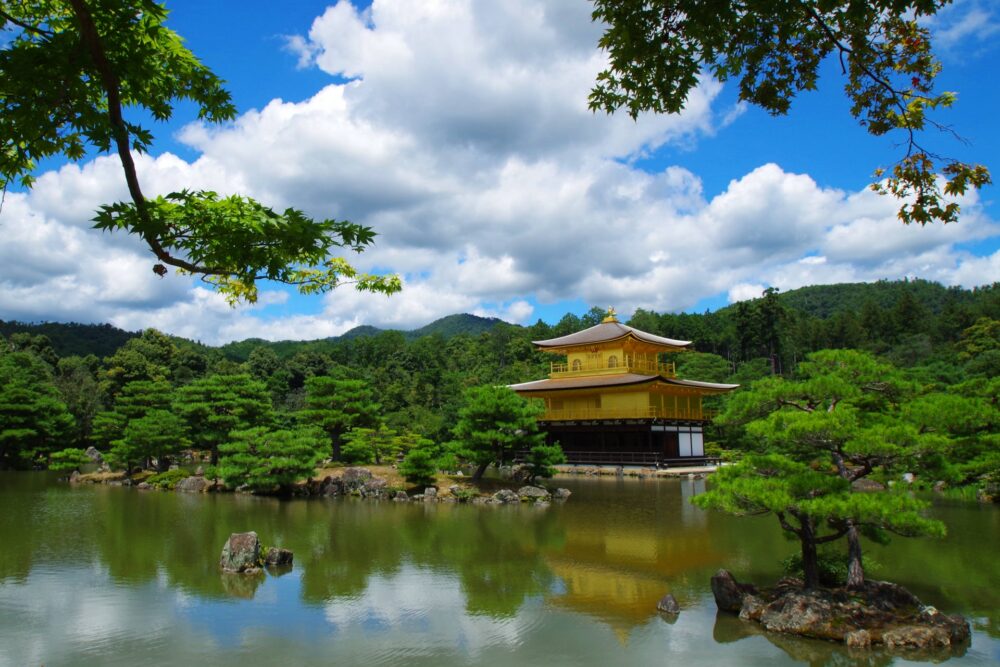
Kyokochi is located in front of the Golden Pavilion and covers approximately 6,600 square meters. Kyokochi means mirror pond, and it truly reflects the picutre of the Golden Pavilion. Moreover, there are ten islands and more than fifteen rocky islets within the pond. Collectively, these islands represent the Japanese archipelago.
Historical Tea House Building “Sekkatei”
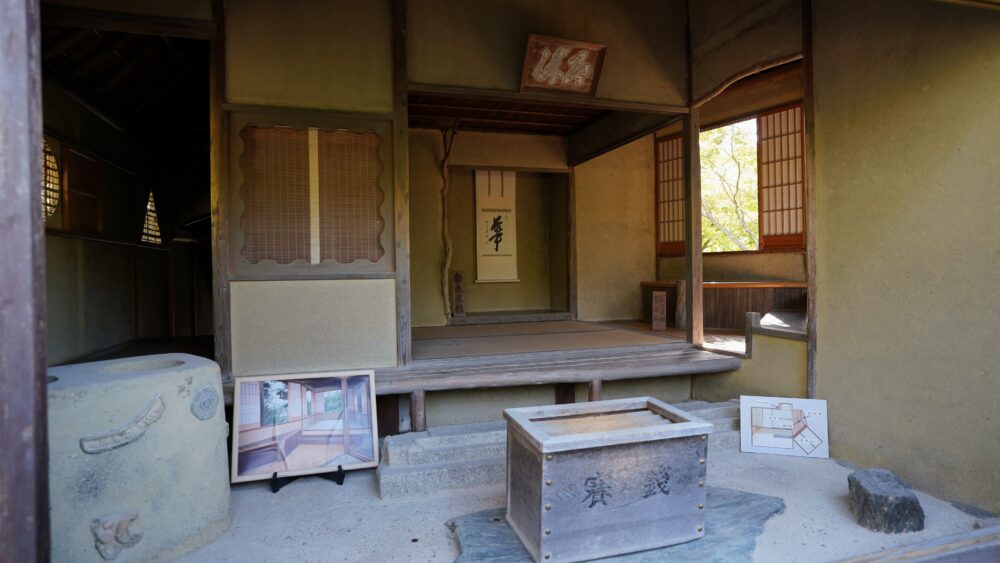
After going up the mountain trail, you’ll find Sekkatei. This place was built by Horin Josho during the Edo period when the Golden Pavilion needed repairs. The tea master Kanamori Sowa told Josho to build Sekkatei for Emperor Go-Mizunoo.
The teahouse is built in a simple style that Sowa liked, and it’s called Sekkatei, which means “Evening Sun Pavilion,” because you can see the sun setting over the Golden Pavilion from there. In the picture above, an old nandina tree is used for the central floor pillar, and on the right side there is a unique shelf made of alternating clover roots and tips, with a plum branch favored by bush warblers placed in the center.
Tea House “Kinkaku-ji Fudo Tyadokoro”
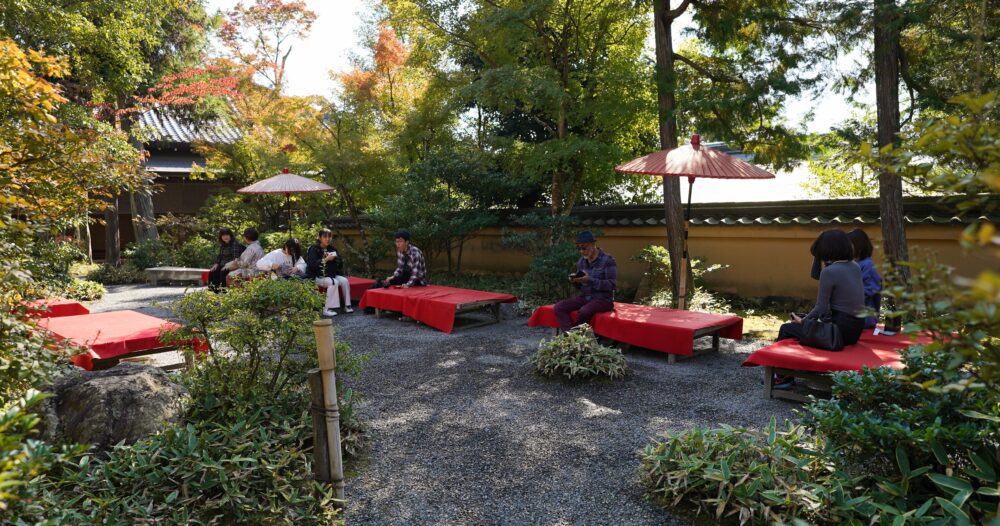
After passing Sekkatei, you will see the tea house “Kinkaku-ji Fudo Tyadokoro” on your right. Inside the teahouse there are tatami mats and outside there are red felt seats and umbrellas. You can enjoy matcha and sweets and take a break. The hours are the same as Kinkaku-ji, from 9:00 a.m. to 5:00 p.m.
Shingon sect temple “Fudodo”
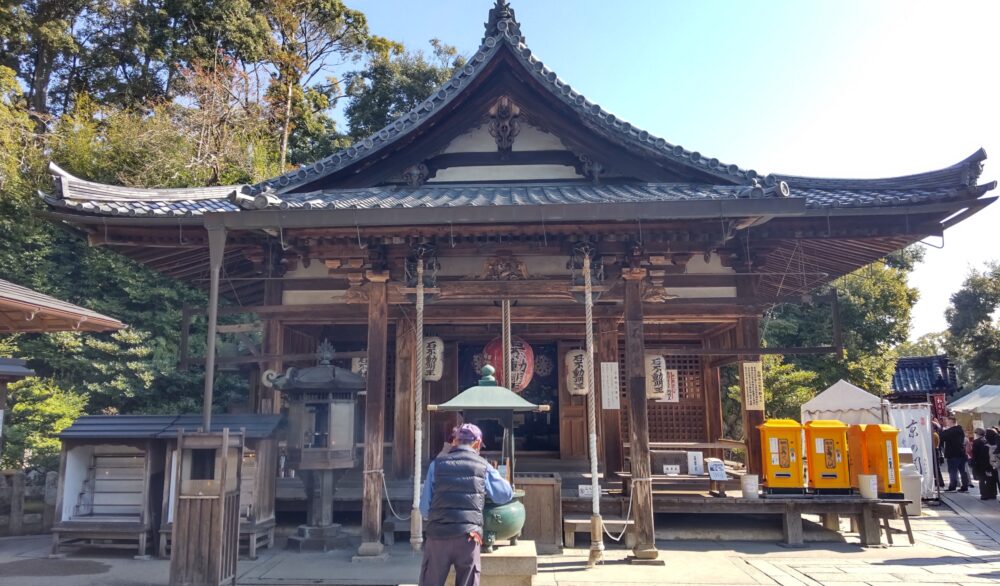
At the end of the route is a temple called Fudo-do. It existed before the construction of Kinkaku-ji and is said to house the main deity, the stone of Skt. Acala “Fudo Myo-o”, carved by Kobo Daishi Kukai, the founder of the Shingon sect of Buddhism.
Information
Open hours
9:00 a.m. – 5:00 p.m.
Regular holiday
None
Admission
Adults: 500 yen
Primary and Middle school students : 300 yen
Goshuin and Omamori
Goshuin are available at the reception desk next to the Fudo-do Hall. It is open between 9:00 a.m. and 4:30 p.m.
Omamori (Japanese amulets) are also available on the north side of the Golden Pavilion. Reception hours are from 9:00 a.m. to 4:30 p.m.
Address
1 Kinkakuji-cho, Kita-ku, Kyoto 603-8361 Japan
Dress Code
There is no official dress code or restrictions on items for visiting Kinkaku-ji. However, since the temple grounds are extensive and require a lot of walking, comfortable clothing and shoes are recommended.
Camera Use Policy
・Photography using drones, monopods or tripods, and video recording using a gimbal are prohibited.
・Unauthorized filming of weddings, cosplay, or fashion shoots with models is also prohibited.
・Taking photos of groups of 5 or more people is prohibited as it may cause congestion.
Popular spots around Kinkakuji Temple
There are many popular tourist attractions near Kinkaku-ji Temple. Many tourists combine a visit to Kinkaku-ji with trips to nearby attractions.
Ryoan-ji Temple
Ryoan-ji Temple is a Zen temple located northwest of Kyoto City, a 20-minute walk from Kinkaku-ji Temple. Originally a nobleman’s villa during the Heian period (794-1185), it was converted into a Zen temple in 1450. Known for its rock garden, it features a carefully raked bed of white gravel, 15 carefully placed stones, and green moss.
Ryoan-ji Temple’s garden features late-blooming weeping cherry blossoms and popular Somei Yoshino cherry trees, which create the illusion of a larger space.
Ninnaji Temple
Ninna-ji Temple, a 20-minute walk from Kinkaku-ji Temple, is the main temple of the Omuro-ha school of Shingon Buddhism. It was founded in 888 in the eastern part of Kyoto City and is a UNESCO World Heritage Site. The temple has a five-story pagoda built in the early 17th century and a Niomon gate guarded by two wooden warriors.
This temple is also famous for its beautiful gardens. The Omuro Goten Garden is located southwest of the temple, while the central area features cherry blossoms.
In spring (early to mid-April), the popular Somei Yoshino cherry blossoms finish blooming, followed by the Omuro cherry blossoms.
Links and Resources
・Official website
Kinkaku-ji(English Text)
Ryoan-ji Temple(Japanese Text only)
Ninna-ji Temple (English Text)
